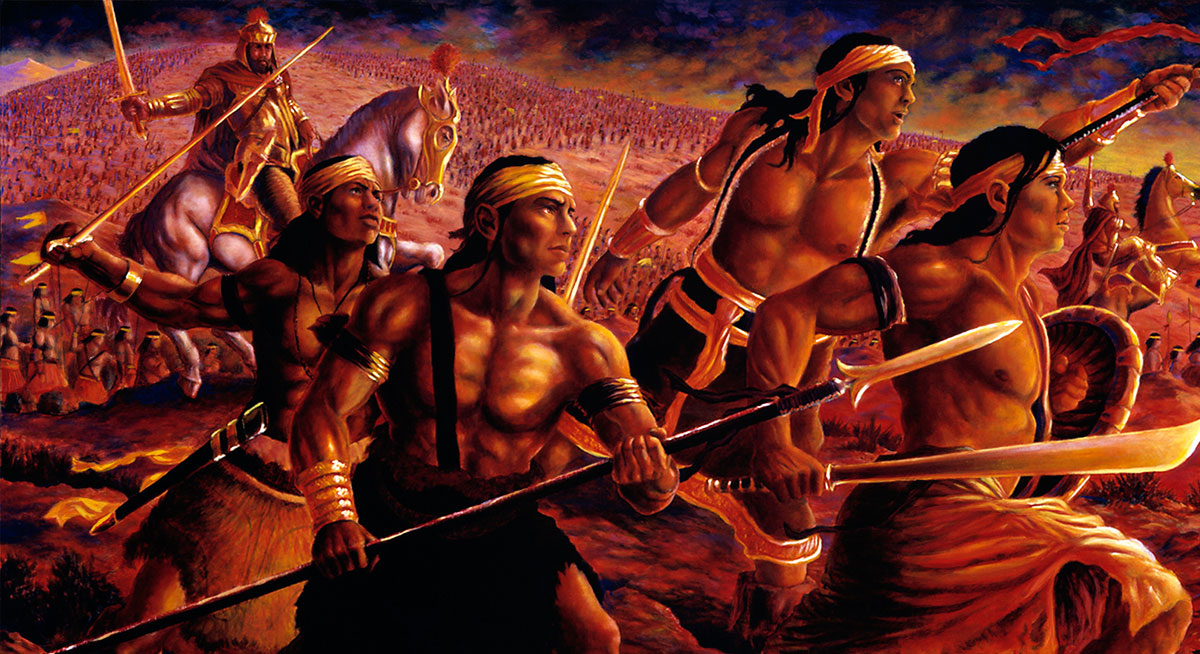To accompany the Come Follow Me Curriculum for March 11-17
You would also enjoy reading the following chapters from the Book of Mormon Institute Student Manual:
- Chapter 12: 2 Nephi 25–27 (churchofjesuschrist.org)
- Chapter 13: 2 Nephi 28–30 (churchofjesuschrist.org)
And you may enjoy one or more of the following related short videos:
If you would like a Kahoot game related to this material which you could use for personal study or use with your family or your class, click here: https://create.kahoot.it/share/2-nephi-26-30/d145695f-3aea-464b-8175-9c17208b8d9e. To use it with a group, after clicking on this link, you will need to log into Kahoot, creating a free account if you have not done so previously, then click on the blue “Start” button. Some of the Kahoot questions may presuppose that the player has read through the suggested answers to the following Points to Ponder and at least has browsed the Institute student manual as well.
Points to Ponder in 2 Nephi 26-30
1. To what event does the following refer? “And great and terrible shall that day be unto the wicked, for they shall perish; and they perish because they cast out the prophets, and the saints, and stone them, and slay them; wherefore the cry of the blood of the saints shall ascend up to God from the ground against them. Wherefore, all those who are proud, and that do wickedly, the day that cometh shall burn them up, saith the Lord of Hosts, for they shall be as stubble.”
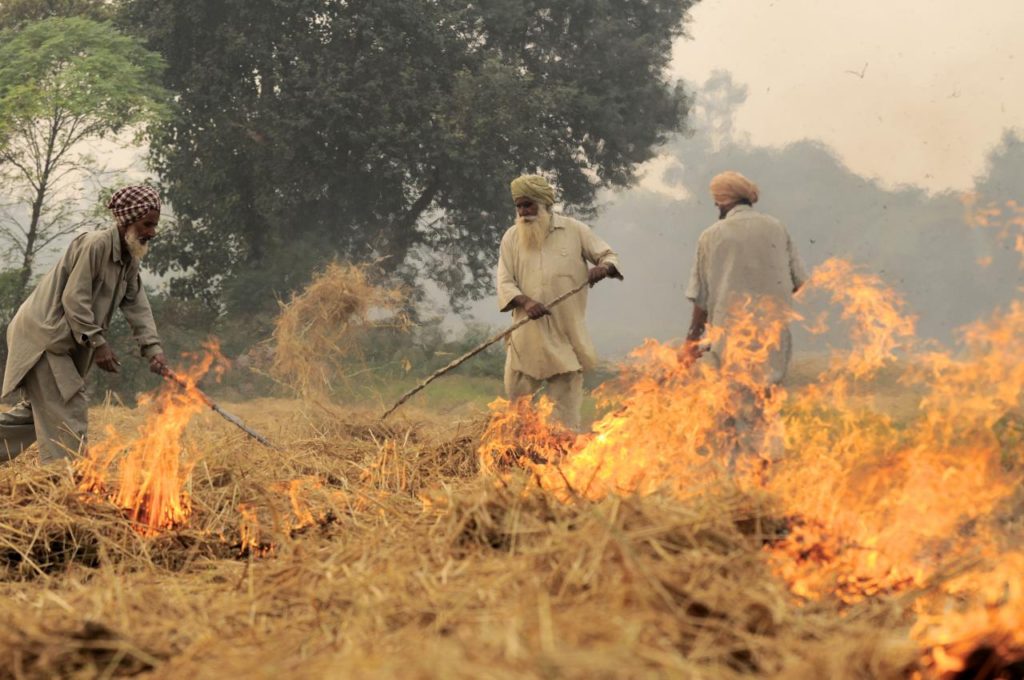
2. As you scan 2 Ne. 26:2-10, how many parallels can you find between Christ’s visit to the Nephites and his predicted Second Coming?
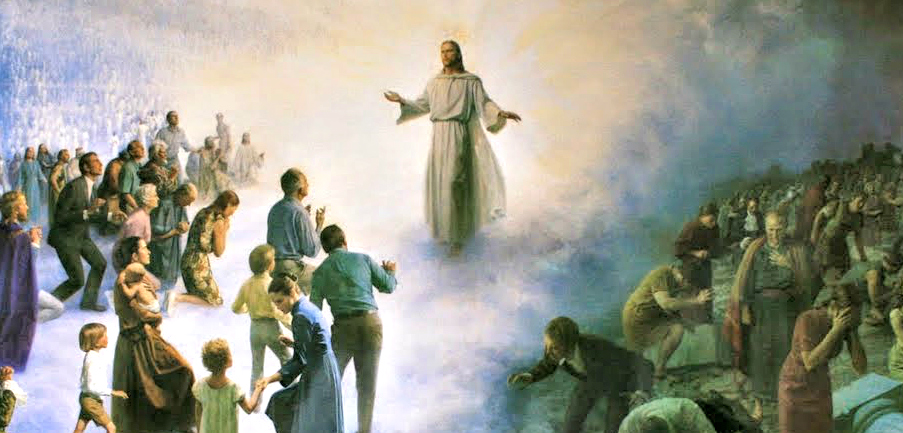
3. Why do you think Nephi mentions the “proud” before those “that do wickedly? (2 Ne. 26:4)

4. What appears to be the main characteristic of those who will not be destroyed? (v. 8)
5. Do you think 2 Ne. 26:11 refers to individuals or nations or both? Can you give examples?
6. Do you think the negative prophecies Nephi makes concerning the latter-day Gentiles (2 Ne. 26:20-22) have already happened, or are they mainly still future?
7. What does it mean that Satan “leadeth them by the neck with a flaxen cord, until he bindeth them with his strong cords forever” (26:22)?

8. Which verse explains why there are mosquitoes and illnesses in the world?

9. Which of the following would be the best example of what Nephi calls “priestcraft”? (2 Ne. 26:29)
a. Someone who robbed a bank to be able to pay his tithing
b. Someone who shared some very personal and spectacular spiritual experiences in a sacrament meeting in order to impress the congregation.
c. Someone who lived with his girl friend without being married.
d. Someone who lied about his age in order to be able to buy liquor
Can you give other examples?

10. Does 26:31 mean you can’t accept a salary for working for the Church? What does it mean?
11. Which verse reminds us that racial prejudice is wrong?
12. What does it mean to be “drunken” with iniquity? (27:1)

13. How far in advance should a young man ask a young woman for a date? How does a young woman feel if a young man asks her for a date for that same day? How does she feel if he asks three months in advance? How does this question relate to the next question on this sheet?

14. Who is the first prophet, so far as we know from the Bible, who foretold the coming forth of the Book of Mormon? How many years in advance did he predict it?

15. In 2 Nephi 27:6-29 find the following people:
a. Joseph Smith
b. Oliver Cowdery, David Whitmer, Martin Harris
c. 4 Whitmers, 3 Smiths, and a Page
d. Charles Anthon (JS-H 1:63-65)
16. Where else have you seen the ideas of 28:3-6?
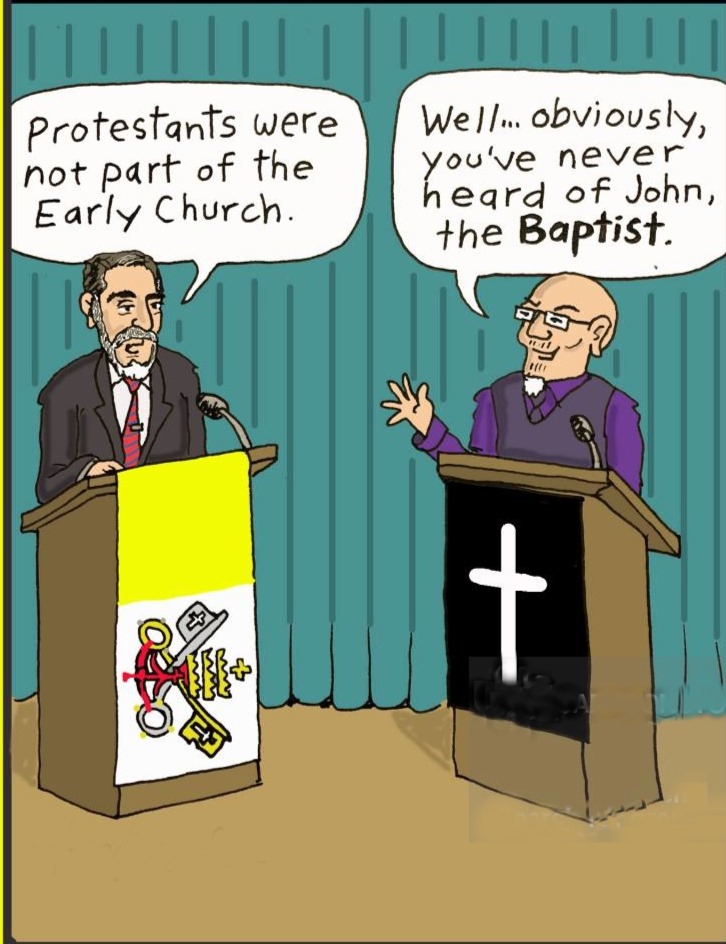
17. Does the Lord really expect us to never sin? (28:8) Isn’t that what repentance is for—to get forgiven for the little sins we all commit?
18. Why might a mission president have wanted to read 28:9-10 to his missionaries?

19. What does it mean that some would “rob the poor because of their fine sanctuaries …[or] because of their fine clothing”? (28:13)

20. In what respects or on what topics would you suggest many humble and faithful Latter‑day Saints are in error, as Nephi predicted they would be? (28:14)
21. What appears particularly cunning about Satan’s tactics, as outlined in 2 Ne. 28:20‑23? Can you cite examples of each?
22. After reading 28:25, how can we ever feel good again about singing Come, Come Ye Saints?
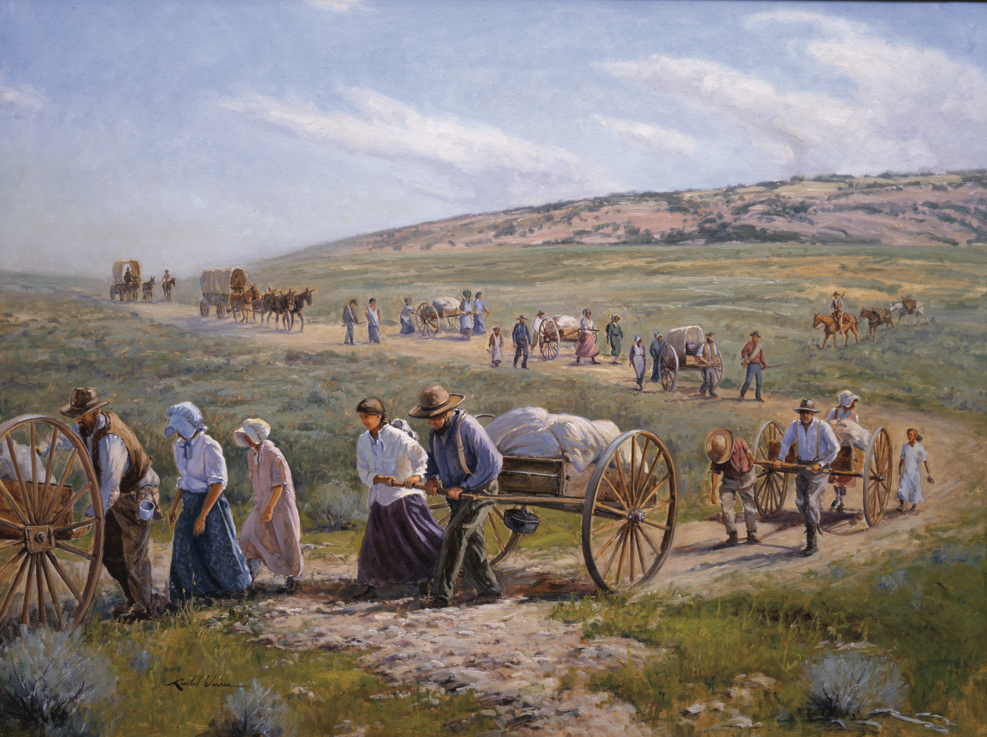
23. Can you point to specific examples of the truthfulness of what Nephi says in 28:30, about the Lord taking away “even that which they have”?
24. Latter‑day Saints often apply 29:3 only to non‑members. In what sense could it also have a Latter-day Saint application?
25. How were 29:4 and 30:6 changed in the 1981 edition of the Book of Mormon? Why do you suppose the changes were made?
26. How would you counter the argument that 2 Ne. 29 was included by Joseph Smith as a clumsy attempt to persuade his readers to believe his book was scripture?
27. Does 29:11 suggest that even Buddhist, Hindu, and Confucianist writings should be regarded as inspired? What additional scriptural volumes do Latter‑day Saints eventually expect to have? When do we expect to get them? What implications does this passage have for our own journals? (See also 30:18)

28. Where can we find the “words of the lost tribes of Israel” referred to by Nephi? (29:13)
29. In light of 30:2, what difference does it really make who our ancestors were?
30. What are you most looking forward to finding out at the future day when “all things shall be made known unto the children of men”? (30:16-18)
31. What other passages in chapters 26-30 did you especially like? Why?
Possible Answers to Points to Ponder in 2 Nephi 26-30
1. To what event does the following refer? “And great and terrible shall that day be unto the wicked, for they shall perish; and they perish because they cast out the prophets, and the saints, and stone them, and slay them; wherefore the cry of the blood of the saints shall ascend up to God from the ground against them. Wherefore, all those who are proud, and that do wickedly, the day that cometh shall burn them up, saith the Lord of Hosts, for they shall be as stubble.”
Though it sounds like events accompanying the Second Coming of Christ, it is in reality a reference to the Savior’s first coming to the Nephites. (26:3-4)
2. As you scan 2 Ne. 26:2-10, how many parallels can you find between Christ’s visit to the Nephites and his predicted Second Coming?
Here are some:
Great wars and contentions (2)
Persecution of the saints and the prophets (3)
Great pride and iniquity (4)
Natural disasters (5-6)
Destruction of the wicked, including by fire (4-6)
Preservation of the righteous (8)
Christ appears and establishes a long period of peace (9)
A final war after an era of peace (9-10)]
3. Why do you think Nephi mentions the “proud” before those “that do wickedly? (2 Ne. 26:4)
As President Ezra Taft Benson indicated, “Pride is the universal sin, the great vice.” (Ensign, May 1989). It is the source of virtually all other sins.
4. What appears to be the main characteristic of those who will not be destroyed? (v. 8)
Hearkening to the words of the prophets and looking forward unto Christ with steadfastness in spite of persecution.
5. Do you think 2 Ne. 26:11 refers to individuals or nations or both? Can you give examples?
Probably both. The downfall of both the Jaredite and the Nephite nations as well as the destruction of the kingdoms of Israel and Judah in the Old Testament came surprisingly quickly after the people totally abandoned the righteousness which had characterized them not many years before. Individuals who lose the Spirit of the Lord may not necessarily be destroyed physically, but they go downhill spiritually remarkably fast and very often suffer a corresponding temporal and emotional decline. Judas fell quickly from the status of a member of the Twelve to that of a son of perdition. John C. Bennett, Wilson Law, and other early LDS apostates who were once in the leading councils of the Church went through a similar speedy decline.
6. Do you think the negative prophecies Nephi makes concerning the latter-day Gentiles (2 Ne. 26:20-22) have already happened, or is it mainly still future?
Though this description certainly fits much that surrounds us in the world today, it will no doubt increase significantly.
7. What does it mean that Satan “leadeth them by the neck with a flaxen cord, until he bindeth them with his strong cords forever” (26:22)?
Initially Satan’s enticements are subtle and could be easily resisted, but once one becomes addicted to a given sin, it is almost impossible to abandon it without divine help.
8. Which verse explains why there are mosquitoes and illnesses in the world?
How about 26:24? Somehow mosquitos and illnesses are good for us, or the Lord would not allow them to be present.
9. Which of the following would be the best example of what Nephi calls “priestcraft”? (2 Ne. 26:29)
a. Someone who robbed a bank to be able to pay his tithing
b. Someone who shared some very personal and spectacular spiritual experiences in a sacrament meeting in order to impress the congregation. [This is the only one which fits Nephi’s description.]
c. Someone who lived with his girlfriend without being married.
d. Someone who lied about his age in order to be able to buy liquor
Can you give other examples?
Perhaps aspiring to be called as bishop or Relief Society president because of the associated prestige. Or trying to be a popular Sunday School teacher mainly for the praise that one would get from class members.
10. Does 26:31 mean you can’t accept a salary for working for the Church? What does it mean?
If one is employed by the Church, his goal should be the building of the kingdom and the blessing of the lives of the members, not the earning of a comfortable salary. One is not necessarily guilty of priestcraft just because he works for the Church, but it remains a possibility.
11. Which verse reminds us that racial prejudice is wrong?
26:33
12. What does it mean to be “drunken” with iniquity? (27:1)
Just as a drunkard seldom fully appreciates the degraded state in which he finds himself, so those “drunken” in iniquity become so desensitized that they don’t realize there is anything wrong with what they are doing.
13. How far in advance should a young man ask a young woman for a date? How does a young woman feel if a young man asks her for a date for that same day? How does she feel if he asks three months in advance? How does this question relate to the next question on this sheet?
Traditionally, it was considered an insult to ask for a date on the same day, the implication being that the girl was so unattractive and unpopular that no one else would have already asked her for a date that day. But by asking 3 months in advance, you tell her you think enough of her that you want to be sure she is available for the date in question and want to be sure all of her other many pursuers don’t beat you to the punch. Similarly, we could conclude that something foretold hundreds of years in advance in the scriptures must be important!
14. Who is the first prophet, so far as we know from the Bible, who foretold the coming forth of the Book of Mormon? How many years in advance did he predict it?
Isaiah predicted it some 2550 years before it occurred. He must have considered it important!
15. In 2 Nephi 27:6-29 find the following people:
a. Joseph Smith [9, 15, 22, etc.]
b. Oliver Cowdery, David Whitmer, Martin Harris [12]
c. 4 Whitmers, 3 Smiths, and a Page [13]
d. Charles Anthon (JS-H 1:63-65) [15, 18]
16. Where else have you seen the ideas of 28:3-6?
It sounds a lot like Joseph Smith’s description of the religious environment of Palmyra which led him into the woods to pray. See JS-H 1:5-6, 9. It also aptly describes the apostate condition of Christianity in general even today.
17. Does the Lord really expect us to never sin? (28:8) Isn’t that what repentance is for—to get forgiven for the little sins we all commit?
While the Lord recognizes that we will continue to sin, given our imperfect and fallen state, He does not invite premeditated sin nor does he minimize its seriousness. He has said He cannot look upon sin with the least degree of allowance (D&C 1:31), though He has provided the atonement to provide a rescue for repentant sinners.
18. Why might a mission president have wanted to read 28:9-10 to his missionaries?
One mission president of my acquaintance wanted to impress upon his missionaries the serious consequences of casual violation of mission rules and attempts to protect other missionaries from being found out in their disobedience.
19. What does it mean that some would “rob the poor because of their fine sanctuaries …[or] because of their fine clothing”? (28:13)
Money spent in the purchase of unnecessarily expensive homes or clothing is money which is not available for use in helping the poor, and since all things in the end belong to the Lord, he counts such misappropriation of funds as “robbery.”
20. In what respects or on what topics would you suggest many humble and faithful Latter‑day Saints are in error, as Nephi predicted they would be? (28:14)
Perhaps in such matters as tolerance for vulgarity in the media, deemphasis of the importance of the traditional family, not taking individual responsibility for one’s own welfare, and underestimating the value of the teachings of the living prophets, as well as in following the trends of the world as outlined in verse 13.
21. What appears particularly cunning about Satan’s tactics, as outlined in 2 Ne. 28:20‑23? Can you cite examples of each?

Satan doesn’t care off which side of the tightrope one falls, provided the fall is fatal. For those who anger easily, he stirs them up to anger against that which is good. For those more inclined to pacifism, he prompts them to not feel sufficient indignation about the evil around them. He has been remarkably successful in convincing many that he doesn’t even exist, and therefore need not be feared.
22. After reading 28:25, how can we ever feel good again about singing Come, Come Ye Saints?
It is, of course, appropriate to feel “all is well” in the sense that we are content with that which the Lord has allotted us (see Alma 29:3), but we should not be accepting of evil around us. To know to do good and not do it is sin. (James 4:17.)
23. Can you point to specific examples of the truthfulness of what Nephi says in 28:30, about the Lord taking away “even that which they have”?
Those in the Christian world who have rejected the Book of Mormon have found that their confidence in the Bible itself has waned significantly. Also, those in the Church who feel that a civil marriage is sufficient, rejecting the eternal sealing offered in the temple, will find themselves ultimately single in the eternities.
24. Latter‑day Saints often apply 29:3 only to non‑members. In what sense could it also have a Latter-day Saint application?
There are some Latter-day Saints who are more tied to what dead prophets have said than to what the current and living prophet is saying.
25. How were 29:4 and 30:6 changed in the 1981 edition of the Book of Mormon? Why do you suppose the changes were made?
“Travels” in 29:4 was changed to “travails,” which makes a lot more sense in the context, though they would have been pronounced essentially the same in Joseph Smith’s day. 30:6 was changed from “white and delightsome” to “pure and delightsome” based on a change Joseph Smith himself made for the 1840 edition but which was overlooked in subsequent printings.
26. How would you counter the argument that 2 Ne. 29 was included by Joseph Smith as a clumsy attempt to persuade his readers to believe his book was scripture?
Invite the critic to apply Moroni’s experiment (Moroni 10:3-5). Only then can he know for sure.
27. Does 29:11 suggest that even Buddhist, Hindu, and Confucianist writings should be regarded as inspired? What additional scriptural volumes do Latter‑day Saints eventually expect to have? When do we expect to get them? What implications does this passage have for our own journals? (See also 30:18)
We do believe that there is a measure of inspiration in the writings of many of the great religious teachers of history, who have been permitted by the Lord to teach a portion of His word to their people. This is not to say that there are not also serious errors in many of those writings. Latter-day Saints expect at least to get the records of the lost tribes and the sealed portion of the Book of Mormon some day. In the case of the sealed portion, Ether 4:7 indicates it will occur when the Gentiles exhibit faith comparable to that of the brother of Jared, which suggests it may probably not occur until the Millennium. We have no indication of whether or not the writings of the lost tribes would come forth prior to that. There may well be other records which the Lord also has in reserve to reveal to His people some day. The command in 29:11 does seem to apply to each of us individually, that we are to write the inspired words the Lord communicates to us.
28. Where can we find the “words of the lost tribes of Israel” referred to by Nephi? (29:13)
At present we cannot find them. Someday we are promised to receive them. (29:13)
29. In light of 30:2, what difference does it really make who our ancestors were?
Virtually none. The important thing is that we end up as part of the House of Israel by adoption, not that we were or were not so born.
30. What are you most looking forward to finding out at the future day when “all things shall be made known unto the children of men”? (30:16-18)
Your choice. I would like to learn details of the creation, details of how the Book of Mormon was translated, and details of other stories from the scriptures.
31. What other passages in chapters 28-30 did you especially like? Why?
Your choice. I would select 28:31, 30:3-6, and 30:10, in addition to the passages already referred to.
